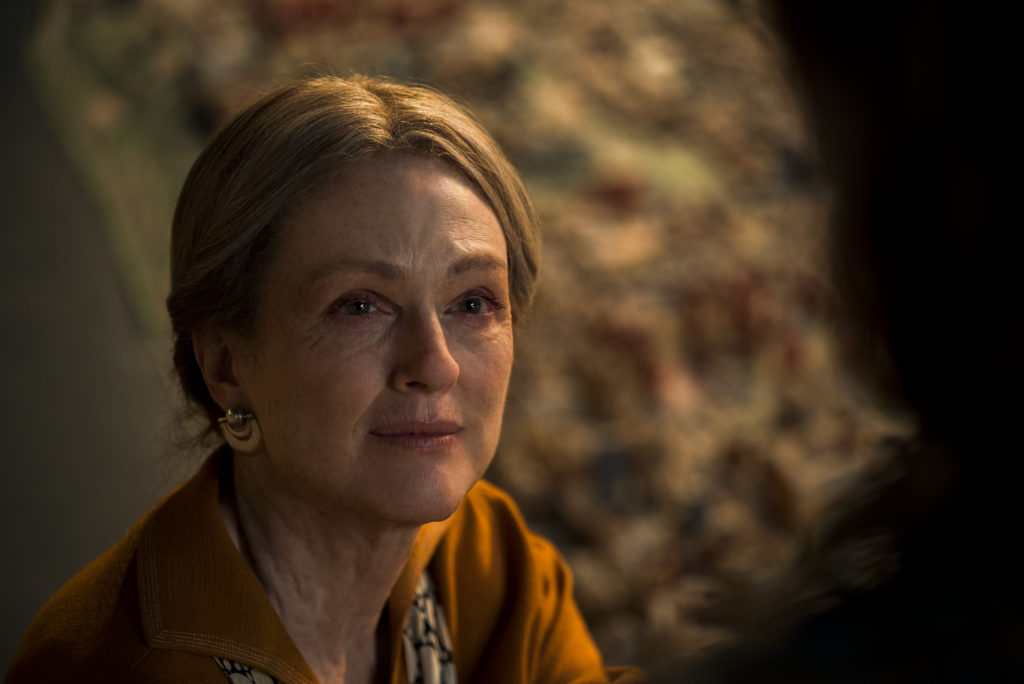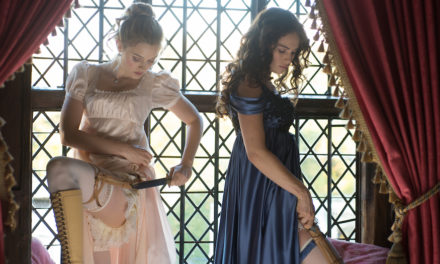Today’s Hollywood producers appear to not take children seriously. Family-friendly film is often a problematic genre for this reason, with studio executives at times pandering to cheap laughs and messages that insult the intelligence and imagination of their intended audience. In the world of art cinema, however, some of the greatest films ever made center on the lives of children, using them as a lens through which to view the adult world. “New Queer Cinema” veteran (and perhaps the greatest living American filmmaker) Todd Haynes takes on that challenge with his latest film “Wonderstruck,” a thrillingly divisive and unfortunately slept-upon entry into the all-ages canon of great films about childhood.
Adapted by Brian Selznick from his novel of the same name, the film follows the parallel journeys of two children living 50 years apart. In 1927, Rose (Millicent Simmonds) is a deaf girl who dreams of going to New York City to visit her favorite silent film star Lillian Mayhew (Julianne Moore), who stars in a stage production while the hostile takeover of talking pictures looms. After Rose’s father Dr. Kincaid (James Urbaniak) attempts to lay down the law about her schooling, she runs away to find her hero in the city.
In 1977, Ben (Oakes Fegley) lives in the home of his deceased mother Elaine (Michelle Williams). He never knew his father, whose mysterious identity has always haunted him. One night, his phone lines are struck by lightning, rendering him deaf. Left with his father’s romantic note to his mother, Ben also sets out to New York City on a quest to meet his long-lost father. As both children travel through the city, a staggered series of reveals illuminates connections between them, and their paths converge at the American Museum of Natural History. The film culminates into an emotional powerhouse of a final act that experiments with another form — animation — in a gorgeous way.
Central to the mastery of the film’s fable-esque narrative is the structuralist conceit with which Haynes works. Rose’s segment is shot entirely within the silent constraints of its period, on black-and-white film and entirely without dialogue. Ben’s segments are stylized after the ’70s, with psychedelic images and a muted color palette. Essential to Haynes’ formal ambition is the godlike work of the film’s craftspeople, most noticeably cinematographer Edward Lachman. Lachman’s 35mm images are rapturous, perfectly capturing the two visual styles. Costume designer Sandy Powell and production designer Mark Friedberg deserve major props for their dedication to period detail, as a film can live or die on its visual presentation. Editor Affonso Goncalves, always a genius of his craft’s subtleties, seamlessly weaves the two time periods together but receives help from one of his collaborators, composer Carter Burwell, who is far and away the film’s star.
There is not enough praise in the world to adequately convey the magnitude of Burwell’s contribution to the film. His music entirely drives the narrative momentum, especially in the case of Rose’s half of the story. Going above and beyond this call, the soundtrack contains a number of leitmotifs for each character, twisting and tangling and mingling as Goncalves cuts between the two narrative threads, creating an emotional wavelength between the film’s halves. After viewing “Wonderstruck,” simply listening to the soundtrack brings the film back to life.
The film isn’t without its issues, including the slight deficit in quality between the two halves. (Simmonds is a much more magnetic performer than Fegley), but most of them stem from Selznick’s work. His screenplay often leans on the heavy coincidence of its narrative to force its notions of wonder and connection on the audience, an issue that similarly plagued Martin Scorsese’s adaptation of “The Invention of Hugo Cabret.” Although the screenplay feels like it comes from a genuine place, it comes across as a bit sentimental and saccharine at times. Still, Haynes’ creative voice triumphs here, even more so than Scorsese’s did. Haynes has consistently proven himself as cinema’s foremost bearer of symbols — after all, he did study the field of semiotics (the academic study of meaning-making) in college. In this sense, “Wonderstruck” continues the metaphorical exploration of queerness that has defined his entire body of work, using the deafness of its characters as a conceptual looking glass in truly groundbreaking ways.
Haynes also uses this exploration to his symbolic advantage on the notion of childhood. Children are fluid beings in regard to their identities as they discover the world around them in a confusing sort of fugue state (exemplified by the film’s molding of time and space). In the case of Rose and Ben, two young people immediately outcast by their physical disabilities, this process becomes all the more complicated. In essence, Haynes takes this notion and sensitively works it into a ravishing vision of all that cinema has to offer. At a time when even most films aimed at adults fail at this, that’s a remarkable achievement.
Grade: A-





